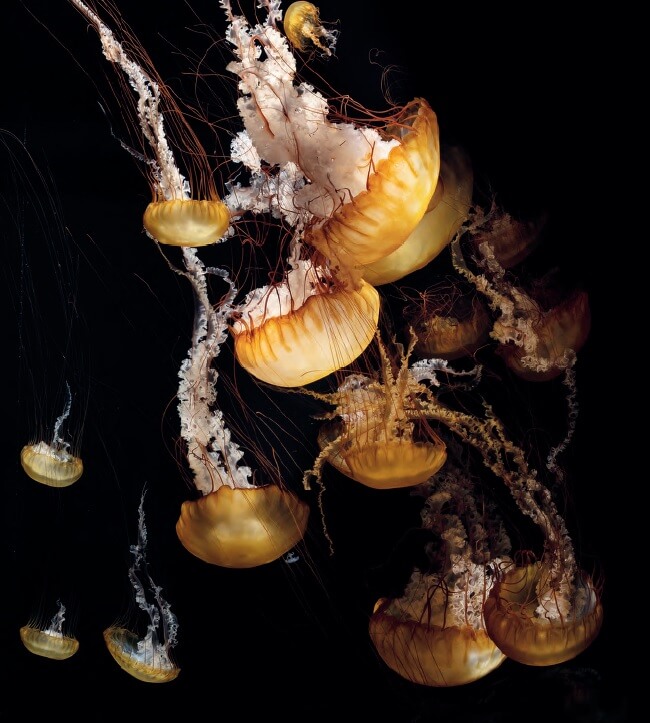Moon jellies, which are found in shallow bays around the world, look like small, not entirely friendly ghosts.
分布范围遍及全球浅海湾的海月水母,看起来像个个子娇小而不太友善的幽灵。
They have translucent bells fringed with pale tentacles, and as they pulse along, it almost seems as if the water itself has come alive. At the National Aquarium in Baltimore, when visitors are invited to touch moon jellies, their first reaction is usually fear. Assured the jellies won't hurt them, the visitors roll up their sleeves and hesitantly reach into the tank.
它们的钟状体是透明的,边缘的触手颜色浅淡,而它们搏动时,周围的水似乎活了起来。在巴尔的摩国家水族馆,每当游客受邀触摸海月水母时,他们一开始的反应往往是恐惧。经确保海月水母不会伤人以后,他们才会卷起袖子,犹豫地把手伸进水池里。

"They're squishy!" I hear one boy squeal.
“它们黏糊糊的!”我听到一名男孩尖声叫着。
"They're cool!" a girl exclaims.
“它们好酷!”有个女孩大声地说。
"I think they're just mesmerizing," Jennie Janssen, the assistant curator who oversees the care of the aquarium's jellyfish, tells me. "They don't have a brain, and yet they're able to survive -- to thrive -- generation after generation."
“我觉得它们着实让人着迷。”该馆负责照管水母的助理研究员珍妮·杨森告诉我。“它们没有脑,却能够一代代生存下来,繁衍旺盛。”



